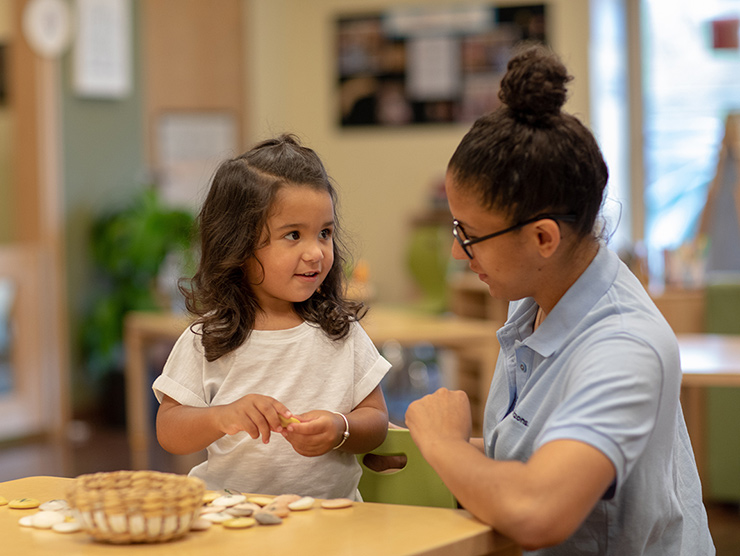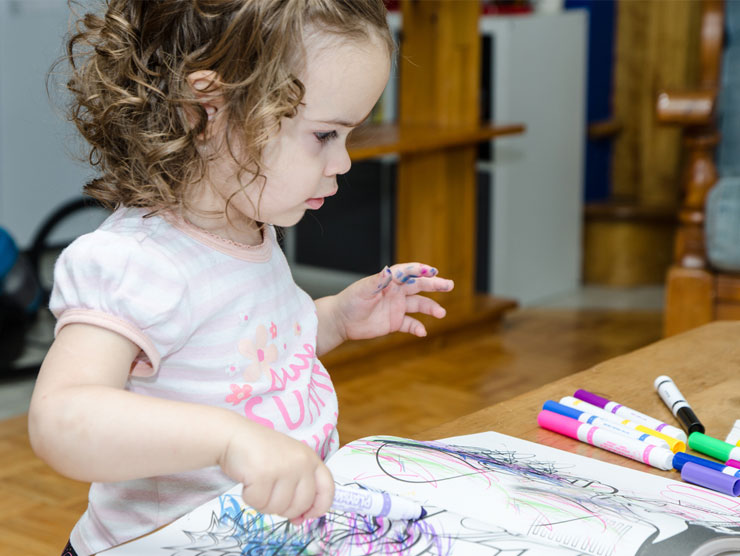Families often contemplate what they can do to boost their child’s readiness for school, especially during the summer. While it can be tempting to focus on discrete skills like math or reading, it is better to consider the concept of school readiness from a holistic perspective; emotional development and social competencies truly rank just as important as cognitive skills.
Educators agree. When surveyed about the importance of school readiness, teachers were unified in their feeling that children should enter their first years of school prepared for the social and emotional demands, as well as an ability to comprehend broader language and math concepts.
A key component of social-emotional skills includes children’s ability to function independently. Children need to express needs and wants, share information, periodically wait, and thoughtfully ask and answer questions. Children also need to navigate their day self-sufficiently, such as visiting the cafeteria, using the bathroom, and boarding and riding the bus.
Preparing children with school readiness skills can be easily integrated into your daily activities. Try adding some of these experiences to your day:
Emotional development activities
Guide your child to order their food
Children in a school setting need to feel confident that they can ask for what they need. A school cafeteria is one place where children need to make selections and vocalize their opinions. In preparation, when eating out at a restaurant, coach your child until he feels comfortable ordering his meal. If your child has a question about his order, encourage him to ask. Your encouragement will help him gain the confidence to speak up. This communication skill will carry over into his daily experience in school.
Practice waiting
Waiting is hard, but it is also a fact of life. School settings often require children to wait their turn as the teacher assists others. Begin to integrate natural waiting time into your day. Start with a very short time and gradually increase as your child shows readiness. For example, if your child asks for assistance with a task, try saying, “I can help you in just a minute—let me finish here.” Be sure to follow through in the time frame you promised. Play simple board games that require your child to wait for their turn. Take your child along on errands that may require waiting, such as picking up a relative from the airport or waiting in the supermarket line. Talk to your child about strategies that help when you are waiting, and acknowledge that it is not always an easy task. Avoid using an electronic device to help pass the time, as these are not a solution for your child in school.
Ask your child to be a problem-solver
As responsive caregivers, parents frequently swoop in and offer solutions to our children’s problems, both large and small. Look for opportunities throughout the day to allow your child to negotiate the solution to a problem. For example, if a block tower falls, instead of rebuilding it for them or giving them the next idea, say to your child, “Oh no, the tower fell! What else could you try?” Practicing problem-solving allows your child to build perseverance and resilience.
Help your child navigate and find places
Most often, your child’s next school setting will be much larger than her current preschool or child care center. She will need to feel comfortable finding the bathroom, the bus line, and other places. This navigation is something you can practice in your daily comings and goings. Start with a familiar place that you visit together often. For example, when at the supermarket, ask your child to direct you to the milk section. Gradually build on your child’s confidence and ask her to direct you to a particular store in the mall or maybe even offer directions as you drive from preschool to home. This will all help your child feel more secure in finding her own way in a new school without you.
These experiences may not be the first that come to your mind when thinking about school readiness. However, mastery of these skills boosts a child’s confidence and emotional readiness to enter a new school setting. Fortunately, these experiences are easy to practice during one’s day and extend into lifelong social-emotional competency.





.ashx?as=1)